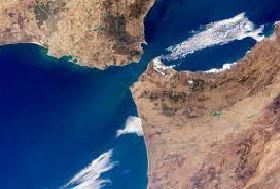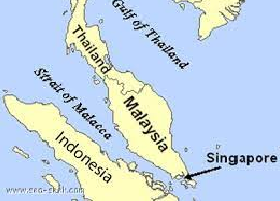World’s Top 5 Strategic Straits and Channels

5 Strategic Straits and Channels: The seamless flow of marine trade and the secure passage of military boats are crucial in today’s connected globe. The importance of numerous vital straits and channels in establishing trade routes and aiding global maritime transit cannot be overstated. The geopolitical dynamics and security issues are shaped by these crucial rivers, which serve as international chokepoints. We will examine the top 5 Strategic Straits and Channels in this blog article and talk about their importance and effects on world politics.

- Strait of Hormuz: The Strait of Hormuz, which separates Iran from the Arabian Peninsula, is regarded as the world’s most important maritime chokepoint. It ties the Persian Gulf and the Arabian Sea together and transports about one-third of the world’s oil. It is impossible to overestimate the strait’s geopolitical significance given its small width of about 21 miles. Conflicts or disruptions in this waterway may have a big impact on regional stability and world energy markets.

2. Strait of Malacca: The Strait of Malacca, which connects the Indian Ocean to the South China Sea, is located between the Malay Peninsula and the Indonesian island of Sumatra. This small strait is one of the busiest and most important chokepoints from a strategic standpoint, handling around one-fourth of all traded products worldwide. For large powers looking to protect their economic interests, control of the Strait of Malacca offers significant influence over regional trade patterns.

3. Suez Canal: The Suez Canal is a man-made waterway that connects the Mediterranean Sea to the Red Sea. The canal considerably cuts transit times and expenses for international trade by enabling ships to skip exhausting trips around Africa’s southernmost tip. It is a vital route for the transportation of natural gas and oil between the Middle East and Europe. Conflicts or bottlenecks in the Suez Canal can significantly affect international commerce flows and have an impact on the energy market.

4. Panama Canal: The Panama Canal, which links the Atlantic and Pacific oceans, is a masterpiece of human achievement and an important thoroughfare. The canal transformed global trade by obviating the protracted and dangerous voyage around Cape Horn. It acts as a vital link for marine trade, enabling ships to efficiently pass between the Pacific and Atlantic Oceans. The Panama Canal has strategic relevance for both the military and economy because it makes it easier for naval assets to transit quickly between the two major oceans.

5. Bosporus and Dardanelles: The Turkish Straits, which include the Bosporus and Dardanelles Straits, connect Turkey’s Black Sea to the Mediterranean Sea. Due to the fact that they give Russia access to the Mediterranean and other regions, these rivers are of utmost geopolitical significance. Given their strategic importance in regulating the flow of commerce and naval resources between the Black Sea and the Mediterranean, the straits have historically been a focal point of international wars and tensions.
Check the Website – http://www.unitednetizens.com/









